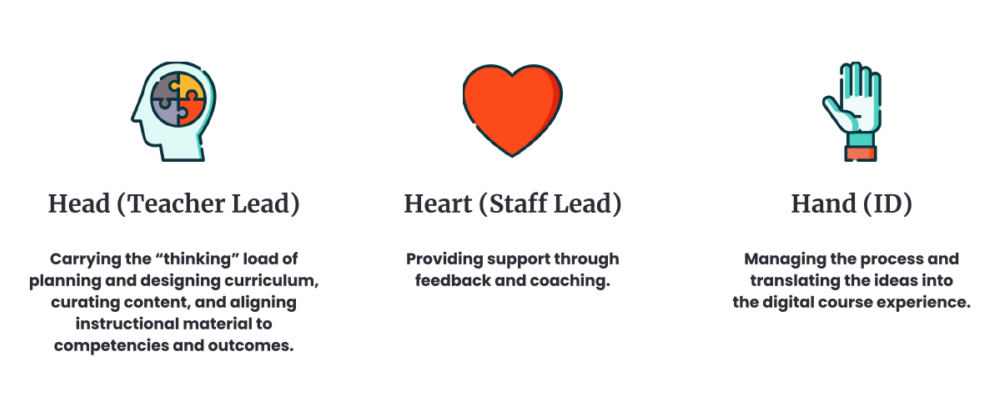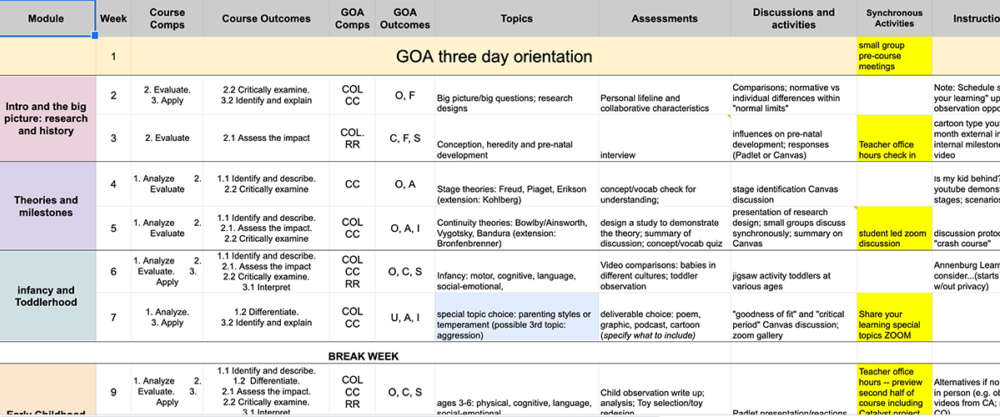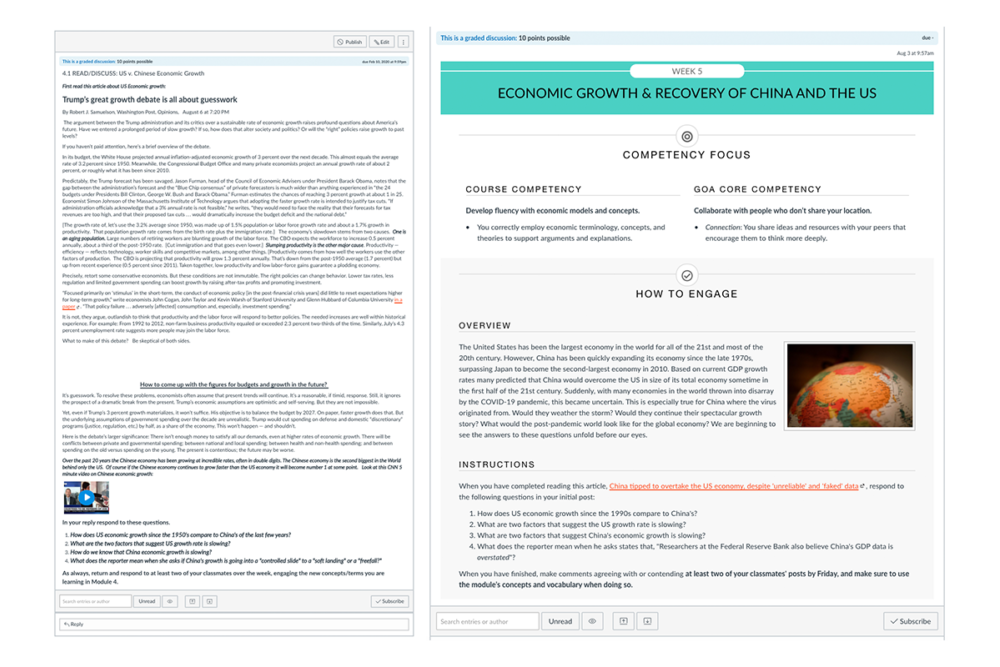Formalizing Online Course Design: 3 Lessons Learned that Apply to All Teachers
In January 2021, GOA rolled out a formal course development process to manage the design workflow for creating new and revising existing courses. The implementation of standards and support structures ensures new measures of quality across all courses in GOA’s Student Program. This formalized online course design process also affords us an opportunity to revisit existing curriculum through an equity lens, ensuring consistency to the learner experience and increased accessibility standards across GOA courses. Our efforts have proven that engaging in a collaborative, yet structured online course development process across a dedicated timeline ensures that learning experiences are high-quality, learner-centered, and equitably-designed. This is especially important at GOA, where, like at many schools, we have many sections of courses led by different teachers, and a high-quality design supports equitable, aligned instruction.
Throughout the past 10 months, we have learned from and listened to each project team that has engaged in this work. While our approach has been refined and improved with each new design cycle, we have seen clear evidence that three components embedded in the process underpin its success.
Gather a Diverse Team
Our course development teams bring cross-disciplinary expertise to project goals. In an agile small group, we staff the roles of Teacher Lead, Staff Lead, and Instructional Designer.

The Teacher Lead carries the “thinking” load of planning and designing curriculum, curating content, and aligning instructional material to competencies and outcomes.
The Staff Lead provides support through feedback and coaching. While focused on review of the Teacher Lead’s work on competencies and outcomes, course mapping, and content writing, the Staff Lead ensures that GOA’s pedagogical standards are being met.

Finally, the Instructional Designer manages the process and translates the ideas and raw content into the digital course experience. While the Instructional Designer serves as the default project manager and executes the course production in the Learning Management System, this role also ensures that GOA’s user experience and visual design standards are being met.
Each team member brings a unique perspective to the project work and contributes to the creation of a more sound course design.
Map with Backward Design
Grant Wiggins and Jay McTighe made famous the framework of Backward Design – focusing on outputs not inputs – and this methodology underlies how we initiate projects in our course development process. Project teams begin with the end goal in mind by articulating the student competencies (what we want students to be able to know, do, or think) and outcomes (criteria for success or the evidence that can be found in student work). Once competencies and outcomes are articulated, we kick off the learning experience design in earnest with course mapping.

The course map serves as the blueprint for all subsequent project work and is a helpful tool for visualizing overall course structures and activity cadences.
This project artifact serves as our roadmap or outline for the course – with competencies and outcomes in mind, the Teacher Lead envisions assessments that evaluate and show evidence of those competencies, as well as learning materials and activities that support the associated necessary skill and knowledge building.

The course map serves as our 10,000 foot view of the learning experience. Not only does it prescribe how we break down the project schedule into manageable work sprints, but it also informs how learning modules will scaffold across our 16-week term. Course mapping helps project teams identify blindspots or areas of improvement for existing courses and facilitates the use of consistent structure from week-to-week or module-to-module even before the project team gets “into the weeds” of content writing.
Design a Responsive Process
Our course development process is set up across several phases with the core experience focused on iterative content writing sprints. Within each sprint, the project team moves through a micro-cycle focused on content drafting, review, revision, and then course build, review, and revision. This approach to course development affords two primary benefits – a regular cadence of feedback loops and malleable boundaries related to the project timeline.
While the Teacher Lead holds ultimate responsibility for designing the learning experience, that goal is arrived at through a highly collaborative process. Throughout the project, feedback is offered from the Staff Lead, Instructional Designer, and a broader set of stakeholders connected to the course (for example, the GOA course team that will teach the newly designed or revised experience during an upcoming academic term). Both the Teacher Lead and the Instructional Designer have an opportunity to revise and improve their work across multiple iterations – either in content, assessment design, or visual interface design.

While work is planned against guidelines of a predetermined schedule, the project team operates in an agile manner with few hard milestones. While acting as project manager, the Instructional Designer supports flexible timing of deliverables to accommodate the unique needs of a given team. Holding space for the timeline to bend and stretch not only allows Teacher Leads the time and space to do their best work, but also contributes to trust–building across the project team.
Take Action
These insights have been gleaned through our online course development process, but the concepts are easily transferable in approaches for face-to-face or hybrid learning experience design. Before launching your next course development initiative, consider assembling a diverse team with varying skill sets and expertise, establishing design decisions with the end goal of student learning competencies and outcomes in mind, and leveraging flexible, short iteration cycles to maximize opportunities for feedback and revision.
Curious about the principles of instructional design? Check out these other GOA resources:
The GOA Design Lab conducts design audits, providing schools with a detailed review of and comprehensive report on the design of online spaces they use for online and hybrid learning. The audit covers key areas of instructional and user experience design. Get in touch with us to learn more.
